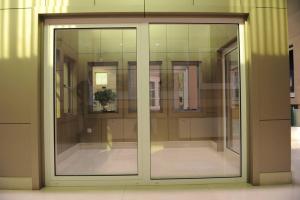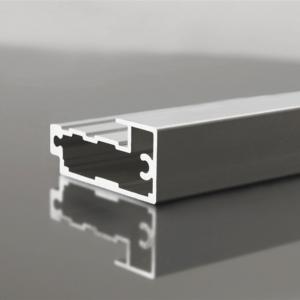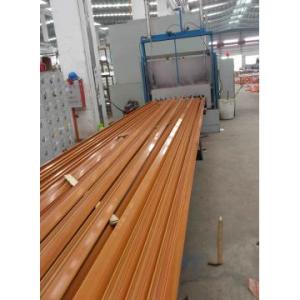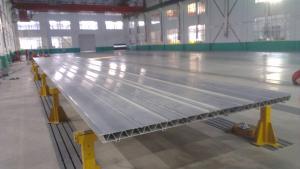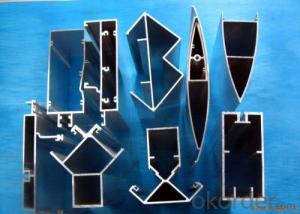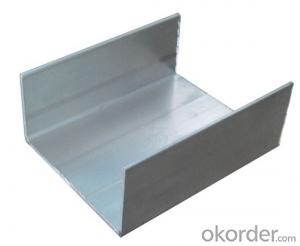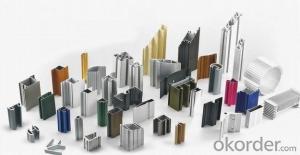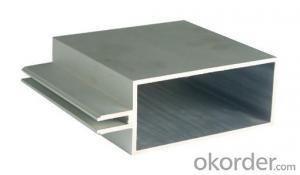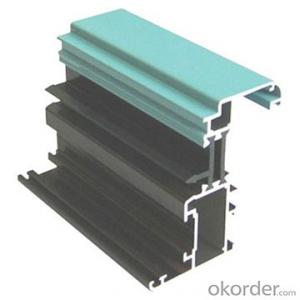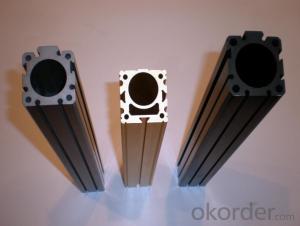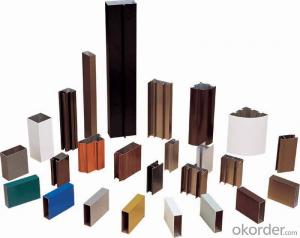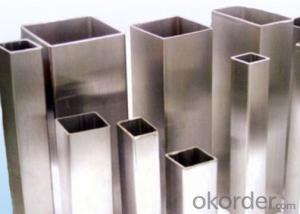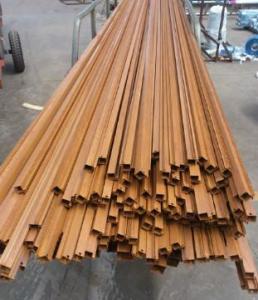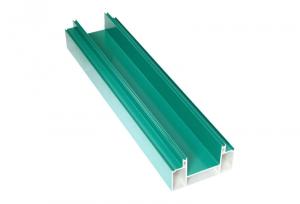Aluminum Window and Door with White Paint - Aluminum Profiles for LED Strips
- Loading Port:
- China Main Port
- Payment Terms:
- TT OR LC
- Min Order Qty:
- -
- Supply Capability:
- -
OKorder Service Pledge
OKorder Financial Service
You Might Also Like
Material introduction
1) 6063-T5 national standard aluminium profile .
2) 95% pure
3) Lengths: 3-6meters, or based on customer requirement
4) Recycling material which is helpful for environment protection
5) Flexible size and shape based on customer's design
Recommend application
1) Exterior of building, pillar, terrace, balcony
2) Airport / bus station, auditorium, music hall, sports center, reception hall
3) Window and door rails and frames
4) Furniture wardrobe rails, frams and kitchen cabinet handles
5) Automatic equipment, profile parts for industrial machines
Technical requirements
1.Standard: GB/75237-2004,Q/320281/PDWD-2008
2.Certification: ISO9001
3.OEM service offered
- Q: 6063 aluminum manufacturers fail to notice how to write a written report
- Hello!You can search the Internet for unqualified written reports, and see if there are similar onesYou see, you sign the contract, which has not marked this point, say how to deal with substandard, you just need to copy the above, make a little change on the lineAsk if your manufacturer has a template. How do you write it?In fact, this is not what the provisions of how to write, as long as the two agreed to make things clear, double admit something on the line, cover double seal, all right, hope to be able to help you, thank you for the adoption.
- Q: This question asks for a comparison of the benefits and drawbacks of utilizing aluminum profiles in the construction of roofs.
- <p>Aluminum profiles in roofing offer several advantages, including their lightweight nature which reduces structural load, high corrosion resistance making them suitable for various climates, and ease of installation which can lower labor costs. They also have a long lifespan and can be recycled, contributing to sustainability. However, there are disadvantages such as higher initial costs compared to traditional materials, potential for dents or damage from impacts, and the need for regular maintenance to preserve their finish and prevent fading. Additionally, aluminum can be noisy during rain or hail, and it may not be as thermally efficient as some other roofing materials, potentially requiring additional insulation.</p>
- Q: The original aluminum is silver, but now the market has black, yellow and green, aluminum radiator, radiator is the color what are formed by oxidation of different colors, what are the benefits of it, are used in the above types of products?
- In this process, there is no difference for several different color film properties, the only difference is that the surface of different colors can increase the appearance of the product, can choose different colors according to the requirements of different products.
- Q: Can aluminum profiles be used for skylights?
- Skylights can indeed utilize aluminum profiles. The durability, strength, and corrosion resistance of aluminum make it a popular choice for skylight frames. Its lightweight yet robust nature ensures the skylight glass is adequately supported and guarantees long-lasting performance. Furthermore, aluminum profiles can be effortlessly tailored and molded to meet specific design needs, enabling a wide range of skylight styles and sizes. Incorporating aluminum profiles in skylights also offers exceptional thermal insulation, promoting energy efficiency by minimizing heat transfer and condensation. In summary, aluminum profiles are a dependable and pragmatic choice for skylight construction.
- Q: Are aluminum profiles capable of being tailored to fit the unique specifications of a construction project?
- <p>Yes, aluminum profiles can be customized to meet specific requirements of a building project. They offer versatility and flexibility, allowing for adjustments in size, shape, and design. Manufacturers can produce aluminum profiles with varying thicknesses, lengths, and finishes to suit the project's structural and aesthetic needs. Customization may include specific bends, cuts, or holes to ensure compatibility with other building components. This adaptability makes aluminum profiles a popular choice for various construction applications, from window frames to structural supports.</p>
- Q: This question asks for methods to ensure that aluminum profiles used in a construction project adhere to safety standards.
- <p>To ensure that the aluminum profiles used in your building project meet safety standards, you should source materials from reputable suppliers who provide certified products. Check for compliance with relevant standards such as ASTM, ISO, or local building codes. Request material certifications and test reports that confirm the profiles' strength, durability, and resistance to environmental factors. Engage a qualified engineer to review the specifications and design of the aluminum profiles to ensure they meet structural requirements. Conduct regular inspections during construction to verify that the profiles are installed correctly and are free from defects. Finally, maintain proper documentation of all materials and inspections to provide a traceable record of compliance with safety standards.</p>
- Q: Are aluminum profiles suitable for decorative applications?
- Yes, aluminum profiles are suitable for decorative applications. Aluminum is a versatile material that offers several advantages in decorative applications. Firstly, aluminum profiles can be easily shaped and formed into various designs, allowing for endless possibilities in decorative applications. They can be extruded into different shapes, sizes, and patterns, giving designers the freedom to create unique and aesthetically pleasing decorative elements. Moreover, aluminum profiles offer excellent durability and corrosion resistance, making them suitable for both indoor and outdoor decorative applications. Aluminum is known for its ability to resist rust and weathering, ensuring that decorative elements made from aluminum profiles will maintain their appearance for a long time. Additionally, aluminum profiles can be finished in various ways to enhance their decorative appeal. They can be anodized or powder-coated to add color, texture, and protection to the surface. These finishing options allow for customization and the ability to match the profiles with the overall design scheme. Furthermore, aluminum profiles are lightweight yet strong, making them easy to install and handle during the decorative application process. This characteristic also makes them suitable for applications where weight is a consideration, such as in suspended or wall-mounted decorative elements. Lastly, aluminum is a sustainable and environmentally friendly material. It is 100% recyclable, and the production process of aluminum profiles requires considerably less energy compared to other materials. Choosing aluminum profiles for decorative applications aligns with sustainable design principles and contributes to reducing the environmental impact. In conclusion, aluminum profiles are highly suitable for decorative applications due to their versatility, durability, corrosion resistance, customization options, lightweight nature, and sustainability. Whether it's for interior or exterior decorative elements, aluminum profiles offer a wide range of possibilities to enhance the aesthetic appeal of any space.
- Q: This question asks about the various methods used to finish aluminum profiles, including painting and coating.
- <p>Aluminum profiles can be finished in several ways to enhance their appearance, durability, and functionality. Common methods include: 1. Anodizing, which provides a protective oxide layer and can be colored. 2. Powder coating, an electrostatic process that offers a durable and colorful finish. 3. Painting, which can be done with various types of paint for aesthetic or protective purposes. 4. Polishing, which gives a shiny, smooth surface finish. 5. Brushing, creating a textured, satin-like appearance. 6. Electroplating, which deposits a thin layer of metal onto the aluminum for decorative or protective reasons. Each method has its advantages and is chosen based on the specific requirements of the application.</p>
- Q: Where is the exact location? TwentyBecause I was doing aluminum sales, want to go to the market!Where is the specific market aluminum sales, as long as there is, I have to go around! Say where it is! For example, what area, what road, how many?! Since I went to Chengdu for the first time, please tell me more about it. Thank you!
- 3rd Ring Rd Sichuan Shaanxi Home Furnishing District 6 Fujimori Mi Avenue Interchange panda is full profile, near the panda road hole profile market two large star market material wholesale. The variety is complete. The interchange in the North Sanhuan.
- Q: How do aluminum profiles perform in vibration and shock absorption applications?
- Due to their exceptional performance characteristics, aluminum profiles find wide application in the field of vibration and shock absorption. The remarkable strength-to-weight ratio of aluminum makes it an ideal material for such purposes, as it effectively absorbs and dampens vibrations and shocks. An important advantage of aluminum profiles in vibration and shock absorption applications lies in their ability to dissipate energy. Aluminum possesses a natural capacity to absorb and distribute energy, thereby reducing the impact of vibrations and shocks. This proves particularly advantageous in industries like automotive, aerospace, and construction, where the safety and performance of equipment, structures, and components are of utmost importance. Additionally, aluminum profiles can be engineered and designed to possess specific properties that enhance their vibration and shock absorption capabilities. For example, different alloy compositions, shapes, and cross-sections can be utilized to optimize the material's resilience and damping characteristics. This enables the customization of profiles to meet the distinct requirements of various applications. Another benefit of aluminum profiles in vibration and shock absorption applications is their resistance to corrosion. Aluminum naturally forms a protective oxide layer on its surface, preventing corrosion. This renders aluminum profiles highly durable and appropriate for use in harsh environments where corrosion can pose a significant concern, such as marine applications. Moreover, aluminum profiles are easily fabricated and installed, further enhancing their appeal in vibration and shock absorption applications. Their lightweight nature simplifies handling and reduces the overall weight of the system, while their flexibility allows for easy integration into diverse designs. In conclusion, aluminum profiles exhibit excellent performance in vibration and shock absorption applications. Their high strength-to-weight ratio, energy dissipation capabilities, corrosion resistance, and ease of fabrication establish them as a preferred choice for industries that necessitate effective dampening of vibrations and shocks.
Send your message to us
Aluminum Window and Door with White Paint - Aluminum Profiles for LED Strips
- Loading Port:
- China Main Port
- Payment Terms:
- TT OR LC
- Min Order Qty:
- -
- Supply Capability:
- -
OKorder Service Pledge
OKorder Financial Service
Similar products
Hot products
Hot Searches
Related keywords
